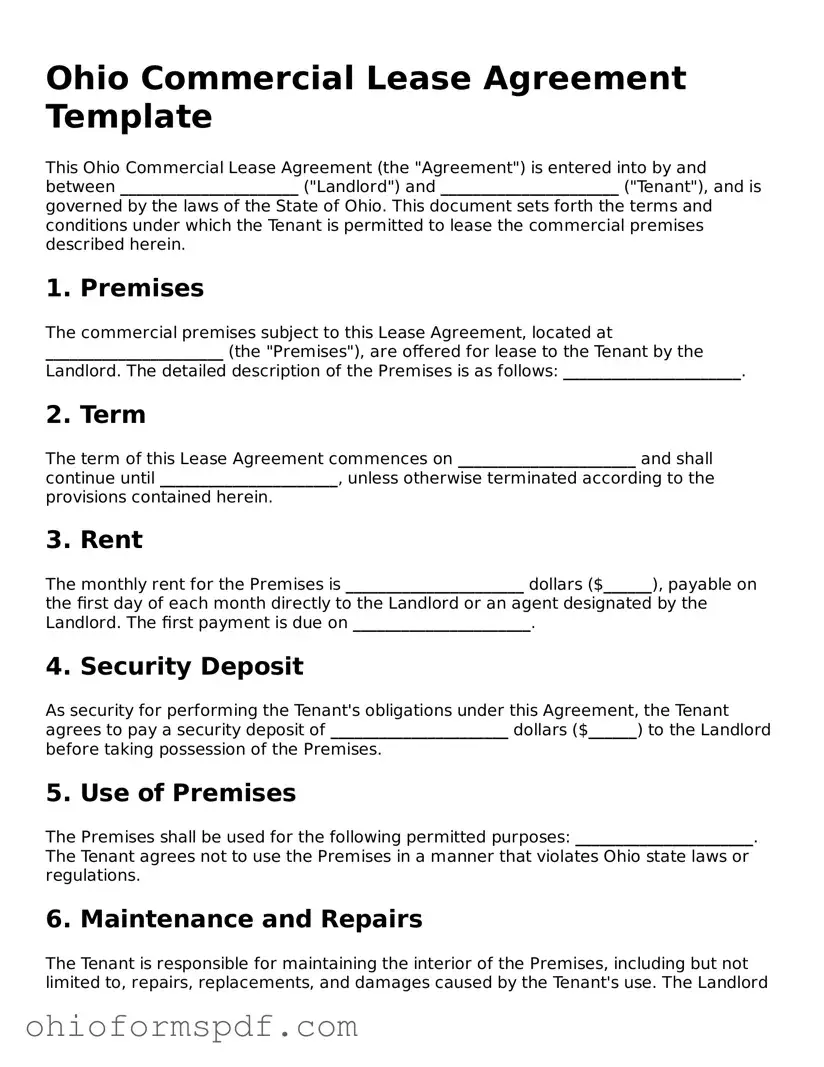What is an Ohio Commercial Lease Agreement?
An Ohio Commercial Lease Agreement is a legally binding document between a landlord and a business tenant. It outlines the terms and conditions under which the tenant can occupy and use the commercial property for business purposes in Ohio. This agreement covers aspects such as rent, lease duration, property use, and responsibilities of each party.
How is a Commercial Lease Agreement in Ohio typically structured?
Typically, a Commercial Lease Agreement in Ohio includes details such as the names of the landlord and tenant, a description of the leased property, the term of the lease, rent amount and payment details, property usage guidelines, maintenance responsibilities, insurance requirements, and conditions for lease renewal or termination. Clauses on dispute resolution, subleasing, and signage may also be included.
What are the different types of Commercial Lease Agreements available in Ohio?
In Ohio, the most common types of Commercial Lease Agreements are gross leases, net leases, and modified gross leases. Gross leases typically require the landlord to pay for most or all property-related expenses. Net leases involve the tenant in bearing a portion or all of these expenses directly. Modified gross leases represent a middle ground, with expenses shared between the landlord and tenant based on the terms of the agreement.
Can you tailor a Commercial Lease Agreement to suit specific business needs?
Yes, parties can customize a Commercial Lease Agreement to address specific business needs and preferences. It is crucial, however, to ensure that any customized terms comply with Ohio laws. Consulting with a legal professional experienced in commercial real estate can help in drafting an agreement that meets the parties' requirements while remaining legally sound.
What should a business consider before signing a Commercial Lease Agreement in Ohio?
Before signing a Commercial Lease Agreement in Ohio, a business should closely review the lease term, rent, lease type, and any stipulations related to property modifications, maintenance, insurance, and termination rights. Understanding the lease's implications for business operations, financial commitments, and flexibility for future changes is essential for making an informed decision.
Are there any specific regulations in Ohio that affect Commercial Lease Agreements?
Ohio law does not have extensive statutes specifically governing Commercial Lease Agreements, allowing parties significant freedom to negotiate terms. However, general contract laws, local zoning ordinances, building codes, and specific statutes related to commercial activities may impact the agreement. It's important to ensure that the lease complies with these legal requirements.
What happens if a tenant breaches a Commercial Lease Agreement in Ohio?
If a tenant breaches a Commercial Lease Agreement in Ohio, the landlord has several options, including seeking damages, terminating the lease, or pursuing specific performance of the lease terms. The specific remedies available to the landlord are usually outlined in the lease itself and must be in accordance with Ohio law. In any case, resolving disputes through negotiation or mediation is often encouraged.
How can a landlord or tenant terminate a Commercial Lease Agreement early in Ohio?
Early termination of a Commercial Lease Agreement in Ohio typically requires agreement from both parties unless a breach of contract occurs. The lease may contain an early termination clause specifying conditions under which the agreement can be ended prematurely. If no such clause exists, parties may negotiate terms for early termination, including potential penalties or buy-out fees. Legal advice can help navigate this process effectively.
